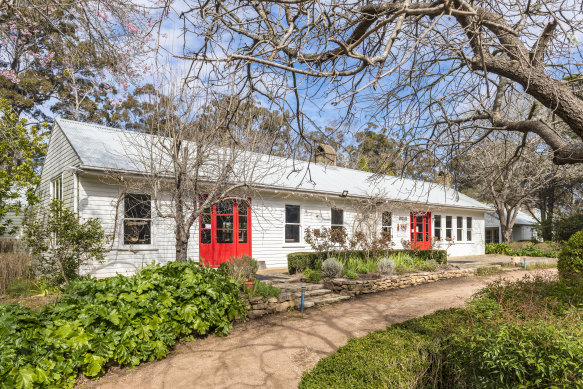Frensham founder and Sturt pioneer Winnifred West.
For decades, it thrived. Sturt’s retail and coffee shop, gallery, workshop spaces and rambling gardens were a creative beacon for like-minded artisans, a reprieve from mass production and modern technology at a time when fewer TAFE colleges and universities are teaching such disciplines.
In February, head of Frensham Geoff Marsh wrote to staff informing them the Board of Governors had initiated a “review” of operations at Sturt as its “current operating model has seen it face some operational and financial challenges” and it would be “neither responsible nor feasible” for it to continue as is.
Disgruntled staff have questioned why their positions were terminated if the intent was for Sturt to eventually continue. The review, chaired by former Australian Museum Trustee and NIDA CEO and chair Jennifer Bott AO, is due to be completed by the end of June.
A Frensham spokesperson said the review would “determine the best and most sustainable way forward for Sturt” but did not respond to speculation it was a response to the NSW government’s recent tightening of rules around independent schools’ not-for-profit classifications and whether Sturt’s commercial activities jeopardised public funding.
In 2022 Frensham, which is about to open a multimillion-dollar indoor sports complex, received $3.9 million in federal funding and $953,671 from NSW, along with $10.8 million in student fees.
By comparison, Sturt’s activities were far more modest. Each year, hundreds of people undertook courses and attended intensive summer and winter schools, paying up to $2000 each and sleeping in vacant dormitories during school holidays.

After 83 years, the Weaving Room at Sturt stands silent.
After nearly a century, Sturt boasts one of the most prized archives of contemporary craft pieces in the world, featuring the works of Ivan McMeekin, AO, Les Blakebrough, AO, and Gwyn Hanssen Pigott, OAM.
Today, the weaving rooms, pottery kilns, ceramic and screen printing studios have fallen silent, and by November, the woodwork school will also come to an end, as the future of the quaint, village-like setting, including West’s former home along with a dormitory designed in 1963 by architect Don Gazzard, is determined.

